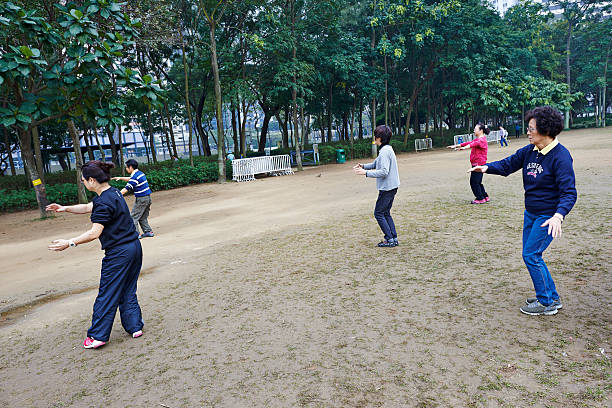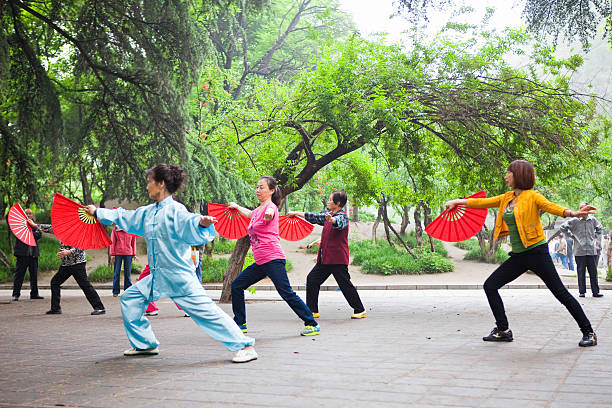Body movement Therapy
Discover the Key Distinctions between Ai Chi and Tai Chi
Are you curious about the differences between Ai Chi and Tai Chi? These two methods may appear identical, yet they have unique origins and techniques.
Ai Chi, a form of aquatic exercise, focuses on slow, flowing movements that promote relaxation and flexibility while Tai Chi is a martial art characterized by its graceful, deliberate movements, promoting balance and harmony. Although both have their roots in ancient Eastern practices, they offer unique benefits and appeal to different individuals.
Whether you are seeking a tranquil exercise in water or a mindful martial art, understanding the differences between Ai Chi and Tai Chi will help you make an informed decision and find the practice that suits you best.
Origins and History of Ai Chi
Ai Chi is a relatively new type of aquatic workout that mixes deep breathing with flowing movements in water. It was created in the early 1990s by Jun Konno, a Japanese swim instructor, to promote relaxation and mind-body harmony. Konno created Ai Chi after drawing influence from Tai Chi, Zen Shiatsu, and different water-based therapies. The technique became widespread in Japan and later extended to other areas of the world.
Ai Chi movements are performed in chest-deep warm water, which provides superior support and reduces joint impact. The buoyancy of the water also provides resistance, making it an efficient approach to build muscle strength and cardiovascular fitness. The smooth, flowing movements of Ai Chi are intended to create profound relaxation and strengthen the mind-body connection.
Origins and History of Tai Chi
Tai Chi, on the other hand, is a traditional Chinese martial technique that emphasizes slow, deliberate motions and regulated breathing. It dates back to the 13th century and is considered a type of meditation in motion. Tai Chi began as a martial art for self-defense, but it has since evolved into a popular health and wellness exercise.
Tai Chi integrates Taoist ideas, which are a Chinese intellectual and spiritual tradition. The practice emphasizes yin-yang equilibrium, the flow of qi (life force), and the development of inner power. Tai Chi forms, also known as sequences or routines, are made up of a series of continuous, fluid movements executed slowly and calm. These motions aim to encourage relaxation, improve posture, balance, and body awareness.

Similarities Between Ai Chi and Tai Chi
Although Ai Chi and Tai Chi have separate roots, they share significant parallels in their emphasis on breath control, relaxation, and mind-body integration. Both methods use deep breathing exercises to increase oxygenation and relaxation. Both methods use slow, deliberate motions that promote mindfulness and mental serenity.
Ai Chi and Tai Chi can also be performed by people of various ages and physical abilities. They are low-impact workouts that may be tailored to specific requirements and abilities. Both disciplines provide a mild approach to improving balance, flexibility, and range of motion. They can also assist to alleviate tension, anxiety, and despair.
Differences in Terms of Movements
One of the primary differences between Ai Chi and Tai Chi is their movements. Ai Chi is performed in water, which provides both buoyancy and resistance. Ai Chi’s flowing movements are specifically developed for a supported, weightless setting. The water’s resistance helps to build muscles and enhance cardiovascular fitness without putting too much strain on the joints.
Tai Chi, on the other hand, is usually done on land, which allows for a wider range of movements and weight-bearing exercises. Also Tai Chi movements are slow and regulated, requiring coordination, balance, and stability. Tai Chi forms frequently contain body weight transfers, rotations, and postures that might boost bone density and joint health.

Differences in Terms of Philosophy
While Ai Chi and Tai Chi have a mind-body concentration, their fundamental philosophies differ. Ai Chi takes influence from a variety of therapeutic modalities, including Zen Shiatsu and water-based therapies. Its goal is to promote peace and relaxation through gentle movements and deep breathing methods conducted in the water.
Tai Chi, on the other hand, is heavily influenced by Taoist philosophy. It focuses on cultivating inner energy (qi) and achieving yin-yang balance. Tai Chi is thought to help balance the body, mind, and spirit. It encourages practitioners to be present in the moment, practice mindfulness, and get a better understanding of themselves and the world.
Benefits of Practicing Ai Chi
Practicing Ai Chi has numerous health benefits. The combination of deep breathing and flowing movements in water reduces tension, improves relaxation, and promotes a sense of wellbeing. Ai Chi can improve cardiovascular fitness, muscle strength and endurance, as well as flexibility and range of motion. The buoyancy of the water gives support and minimizes the impact on the joints, making Ai Chi appropriate for people with arthritis, fibromyalgia, and other joint-related illnesses.
Benefits of Practicing Tai Chi
Tai Chi has received widespread recognition for its numerous health advantages. Regular practice helps boost balance and stability, lower the chance of falling, and improve posture and body alignment. Tai Chi’s slow, controlled movements promote circulation, flexibility, and muscle strength. Tai Chi has also been demonstrated to improve mental health by lowering anxiety and depression symptoms and increasing general quality of life.

How to Choose Between Ai Chi and Tai Chi
The choice between Ai Chi and Tai Chi is based on your unique interests, goals, and circumstances. If you adore the water and want a low-impact workout, Ai Chi may be the right fit for you. It combines the benefits of aquatic treatment with the mental-physical qualities of Tai Chi.
Ai Chi is also an excellent choice for people with joint concerns or those searching for a mild but effective type of exercise.
If you prefer land-based activities and want to explore the philosophical components of a traditional martial art, Tai Chi may be a better fit. Tai Chi emphasizes meditation and awareness while also providing physical advantages such as enhanced balance, flexibility, and strength.
Tai Chi can be practiced in a variety of places, including parks, community centers, and even at home using instructional DVDs or online sessions.
Ultimately, the decision between Ai Chi and Tai Chi is personal. Consider your hobbies, preferences, and physical limitations. You may also wish to check with a competent instructor or healthcare practitioner to ensure that the practice you select is safe and appropriate for your requirements.
Conclusion
To summarize, Ai Chi and Tai Chi are two unique disciplines with their own histories, methodologies, and advantages.
Ai Chi is a relatively recent aquatic exercise that mixes deep breathing with flowing movements in the water, whereas Tai Chi is an old Chinese martial art that emphasizes slow, methodical movements and regulated breathing. Both disciplines have several health benefits, such as increased balance, flexibility, and stress reduction.
Understanding the distinctions between Ai Chi and Tai Chi allows you to make an informed decision and begin a practice that is tailored to your specific requirements and interests. Whether you prefer the soothing movements and support of water or the attentive meditation in motion on land, both can lead to better health.
Trusted Health, Wellness, and Medical advice for your well-being


